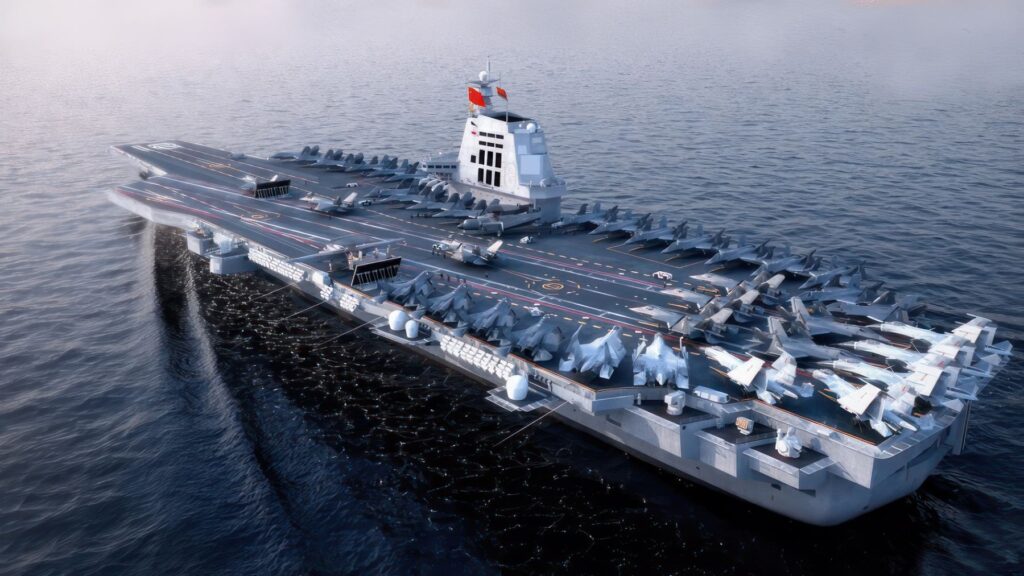There are moments in history when a machine becomes more than metal—when it speaks not only of engineering, but of a nation’s arrival on the world stage. The Fujian, China’s most advanced aircraft carrier to date, is such a moment. It is not merely a warship; it is a milestone of technological sovereignty, a symbol of how far China’s naval ambition has come in just two decades.
Launched in 2022 and now nearing commissioning, the Fujian represents a transformational shift in how the world views maritime power. It is the first Chinese carrier built entirely at home, free of Soviet legacy designs, and the first to incorporate electromagnetic catapults, placing it in the same league as America’s Ford-class supercarriers.
But more than numbers or tonnage, the Fujian marks a transition of confidence—from cautious imitator to innovative force.
The story of Fujian began with Liaoning, an overhauled ex-Soviet hull that once seemed like a political gesture. But every trial, every deck landing, every launch prepared the stage for something greater. Shandong followed, homegrown yet constrained by ski-jump limitations.
Now, with Fujian—code-named Type 003—China signals it is ready to shape the future, not just learn from it. Its EMALS (Electromagnetic Aircraft Launch System) is no small feature. It unlocks heavier aircraft, stealth jets, and the long-range vision that defines modern carrier operations.
Inside Fujian’s massive hull are not just weapons and runways, but the quiet confidence of mastery—of a country that believes in its own hands, its own designs, and its own destiny.
Fujian’s expected air wing includes the J-15C, a naval strike variant, and the long-anticipated J-35, a stealth fighter poised to give China a fifth-generation presence at sea. Add to that the KJ-600, an early warning aircraft, and new drone capabilities, and it becomes clear: the sky above this ship is being prepared not for the past, but for the next era of power projection.
Every catapult test run in May, every sled launch, is a rehearsal—not just for war, but for recognition: that China can now build, field, and soon deploy a floating force that reshapes the strategic map of the Indo-Pacific.
For decades, American aircraft carriers symbolized unchallenged supremacy, patrolling the Pacific like guardians of a maritime order. Fujian alters that dynamic. Its reach—deep into the Philippine Sea and beyond the first island chain—offers China a new kind of presence, one that combines hard power with geopolitical posture.
While it may not yet match America’s nuclear-powered endurance, the symbolic impact is already real. RAND studies suggest Fujian could triple combat sorties over Taiwan compared to its predecessors—a chilling metric for military planners, but a powerful statement of strategic evolution.
In the end, Fujian is more than a carrier. It is a tribute to human ambition, to national resolve, and to the engineers, sailors, and strategists who dared to dream bigger than the last blueprint allowed.
Like all great achievements, it carries echoes of identity. For China, it represents a moment of recognition—not just by others, but of itself. Recognition that it no longer needs to follow, because it is ready to lead.
And for the world, Fujian offers a quiet but undeniable reminder: we are entering a multipolar maritime era, and history—like the sea—waits for no one.











